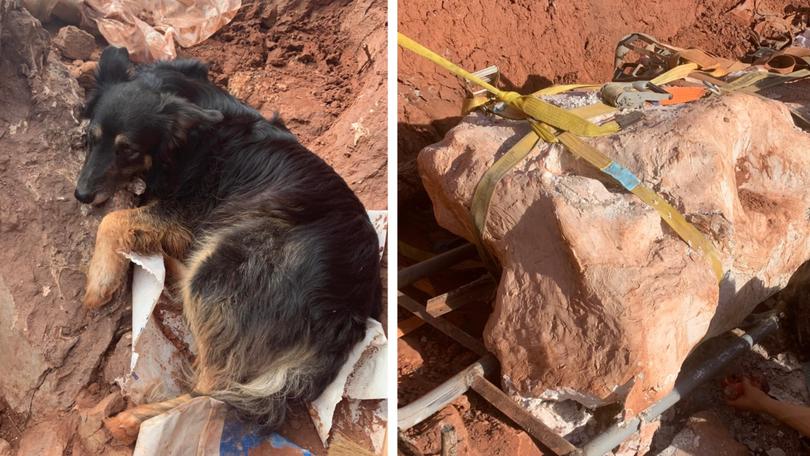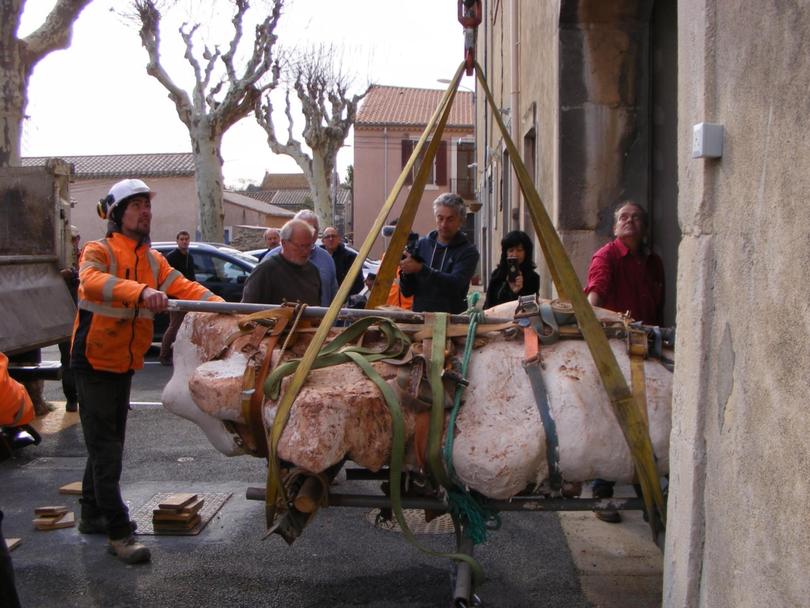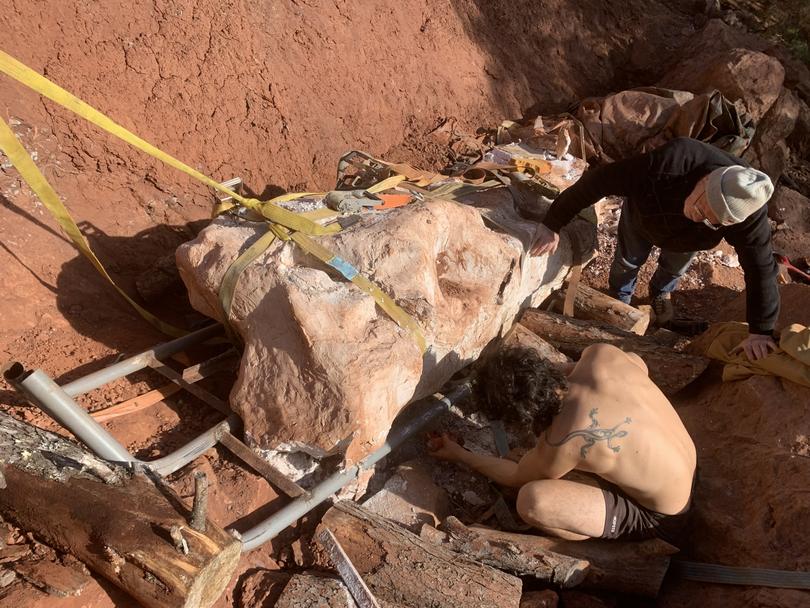Frenchman walking his dog found a rare intact skeleton of the largest dinosaur to walk the planet

Two years ago, Damien Boschetto decided to take his dog for a walk. He and Muffin, a border collie mix, headed over to a forest in Montouliers, a few miles from his home in Cruzy, in southern France.
While Muffin sniffed and explored the trail, Mr Boschetto kept an eye out for fossils - a favourite pastime for him after studying paleontology in college. Soon he spotted something poking out from an eroded cliff. It was a bone. And a big one.
It turned out to be the pelvic bone of a titanosaur, a classification of long-necked dinosaurs that were among the largest creatures ever to set foot on this planet. There were more than 30 varieties of titanosaurs, with the largest measuring up to 70 tonnes and 26 metres long.
Sign up to The Nightly's newsletters.
Get the first look at the digital newspaper, curated daily stories and breaking headlines delivered to your inbox.
By continuing you agree to our Terms and Privacy Policy.Mr Boschetto’s discovery was initially kept secret to protect the archaeological site, but the amateur paleontologist is finally talking about what he and Muffin found in 2022.
“This is not my first attempt,” Mr Boschetto, 25, said in an email to The Washington Post. “I have already discovered many dinosaur bones, but it is of course always an excitement to discover new bones.”
Titanosaur fossils are not common in Europe, so this find was special - all the more so because Mr Boschetto found a lot more than one bone. What he eventually uncovered was a titanosaur skeleton that was 70 percent complete, with most of the bones still connected.
“This is a rare and exceptional discovery in France and Europe,” said Mr Boschetto, who worked with a local archaeological team to unearth the rest of the fossil. He added, “On the day we saw that it was an almost completely connected dinosaur, the excitement was at its highest.”

For the next two years, Mr Boschetto and members of the Archaeological and Paleontological Cultural Association (ACAP) at the Cruzy Museum worked in secret on the dig. They were always accompanied by Muffin, who lent her efforts to the project.
“My dog didn’t particularly help us to excavate but often stood guard over the land and the fossils,” Mr Boschetto said.
The skeleton was buried in a sediment layer of hard-packed sandstone, requiring a slow and deliberate process to extract it. According to Mr Boschetto, it is missing the skull and a femur, which the team hopes to locate in future excavations.
Numerous species and subspecies of titanosaur, a plant-eating dinosaur, lived during the Cretaceous period, which lasted from 145 million to 66 million years ago. They had large bodies and very long necks that enabled them to reach the leaves of tall trees.
For a titanosaur, this skeleton was on the smaller side. Mr Boschetto estimates the one he uncovered was about 30 feet in length. The sediment level where it was found indicates it lived about 70 million years ago during the late Cretaceous era. He said the team continues to study the fossil in hopes of determining its age and the kind of titanosaur it was.
Once work is completed, the skeleton will be displayed at the Cruzy Museum, the small local museum where Mr Boschetto has volunteered for the past few years. Director Francis Fages wrote in an email that his young protégé has made a big impact in a short time with several fossil finds.
“Since Damien Boschetto joined the museum and the ACAP, he has contributed a lot to the paleontology of our collections, which is important for the future,” he said in a translated statement. “These discoveries are interesting from a scientific point of view because they contribute to the understanding of the species and ecosystems of the late Cretaceous of France and Europe.”
In September, Mr Boschetto left his job in the energy sector. With paleontology as his passion, he applied to a college in Paris that has a campus in Cruzy in order to turn his avocation into his vocation.

“I would like to join the Ecole Pratique des Hautes Etudes to obtain a master’s degree in paleontology to promote my work,” he wrote. “This discovery strengthened my involvement in scientific research and in my resumption of studies in paleontology.”
No matter what the future holds, Mr Boschetto will continue bringing his 8-year-old furry friend on future fossil-finding expeditions.
“I continue to search our sites around Cruzy and study these fauna - with Muffin, of course!” he said. “He accompanies me everywhere.”
The Washington Post
